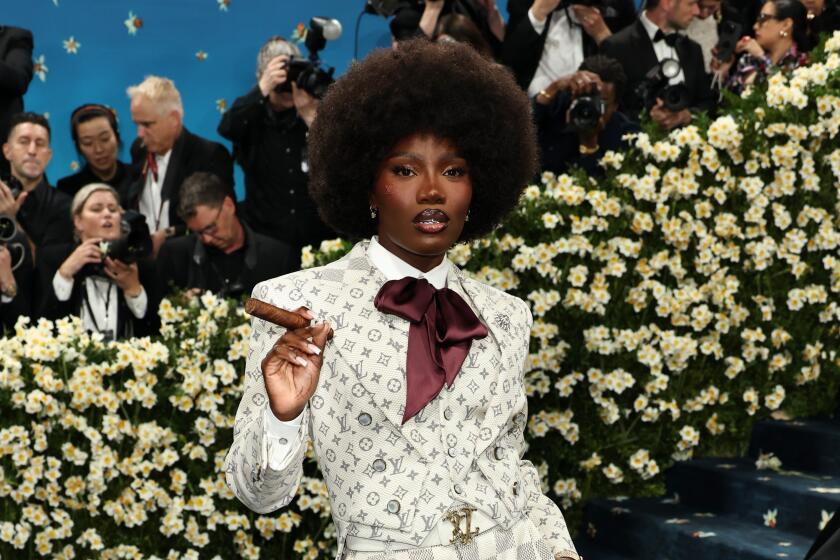In the Emmy animated program category, it’s kids’ shows versus adult fare
- Share via
Last year, a little one-off show for ABC called “Prep & Landing” came out of nowhere and upended expectations of the Emmy animation categories. It was a special, it was on a broadcast network, it was clearly kid-centric — and it ended up winning the animated program category.
Sure, “Prep” came with the Disney/John Lasseter seal of approval on it, and that may have assisted in its win. But the half-hour special was also an odd fish in a newly reconsidered pair of categories: animated program (for programming less than one hour) and animated program (for programming one hour or more), which were mashed together. “Prep” was both special … and short special. It’s almost impossible to know how it would have competed, or fared, in the 10 years prior to the combination — since specials (which were almost always longer than a half hour) had been segregated from general primetime animation.
But even more significantly, “Prep’s” win also signaled that primetime animation might begin to open up again to kid-friendly programs.
For those who’ve been paying attention, it’s been a long drought for children’s animation in primetime: Ever since “The Simpsons” drew a bright line in 1990 with its unbroken series of nominations and intermittent wins, primetime children’s animated programming has been doing a slow fade out. Yes, “Simpsons” and “Family Guy” and even “South Park” may have a healthy audience of teens and younger, but they are not primarily made for children. Adult-geared, children-peripheral programming now dominates primetime.
But is this a bad thing?
“The types of stories you can tell in an adult show are different than a children’s show,” says Pen Ward, creator of Cartoon Network’s “Adventure Time.” “A lot of children’s shows are geared toward education, while shows for adults are more about pure entertainment.”
Tom Sito, veteran animator and a faculty member at USC’s School of Cinematic Arts, agrees that the two types of shows are at heart different, and not just in content. “Timing for children’s shows, and staging of them, is different than with adult shows. The cutting isn’t as rapid and there’s space between the dialogue,” he says. “It’s not as hip. It’s not really fair to put it up against shows like ‘Family Guy.’”
Of course, children’s programming gets its due in the Daytime Emmy Awards, and the Primetime Emmys does have the a children’s program category. But shows like “SpongeBob SquarePants,” which slot into the primetime hours, are occasionally bridesmaids, never brides. “SpongeBob” has seven nominations, no wins.
Brown Johnson, president of animation for Nickelodeon, takes it in stride, noting that the network doesn’t really place trade ads or send out screeners. “It would be great to get a win. But it’s hard to go up against ‘The Simpsons’ and ‘Family Guy.’ The competition is not a children’s category,” she says.
But should any of this matter? In theory, according to Emmy Awards executive John Leverence, the awards are for the craft — not the content — of a show. “It’s an eccentric eligibility,” he says. “We have our animation branch as specialists. There is a process of evaluation that depends on the special skills and expertise of people who work in that particular area of television, and they are the ones most capable of dealing with the nuts and bolts of the layout, color, characterization and all the things they look at when evaluating.”
If that’s true, though, then at some point in the last seven nominations it’s surprising that “SpongeBob” has routinely proved good enough for the nomination, but not good enough for the win. Is it really just about the drawing, or the storyboarding?
And when a show did break through the “Simpsons” / “South Park” / “Futurama” juggernaut in the previous decade, it was Cartoon Network’s “Samurai Jack,” again a show whose demographics are not first and foremost children.
“I don’t know about adults versus kids, or if it’s about just being a good show,” says Brian Miller, senior vice president and general manager of Cartoon Network Studios. “It’s about being a funny show, and an appealing show.”
“The thing is, the people who vote on these categories are adults, not children,” says Frank Gladstone, president of ASIFA-Hollywood. Four years ago, the animation guild’s Annie Awards also recognized this kids vs. adults divide, and split its TV categories into best animated television production and best animated television production for children.
“The content was so different, the approach was so different, the stories were so different it was difficult for them to compete,” Gladstone says. “It’s like saying a bike with training wheels and a titanium racing bike should race. They’re both bikes that serve legitimate purposes and fit in the same species, but they’re not really the same.”
Still, for some, all is fair in love and cartoons: Time is how the Academy of Television Arts and Sciences sees fit to divide its primary animation categories, and for now time will remain the bright, dividing line at the Emmys — while in theory, “craft” is what is actually being judged. Whether either of those makes sense in theory or practice depends on what side of that line a person may stand on.
“‘Fair’ is a crazy word to use with awards,” says Al Jean, “Simpsons” show runner. “They can’t give an award to everybody, and there are a huge number of animation styles. It’s hard to say how anyone should vote.”
More to Read
The biggest entertainment stories
Get our big stories about Hollywood, film, television, music, arts, culture and more right in your inbox as soon as they publish.
You may occasionally receive promotional content from the Los Angeles Times.










